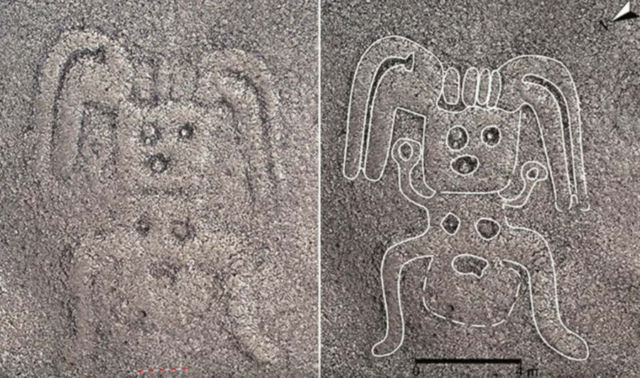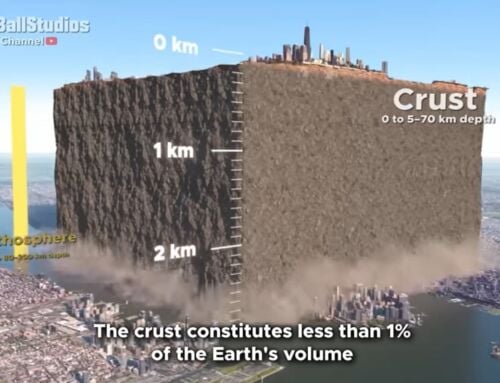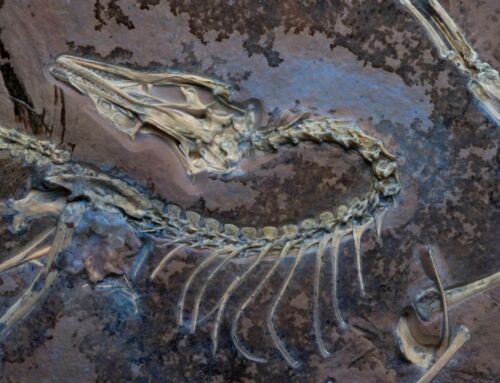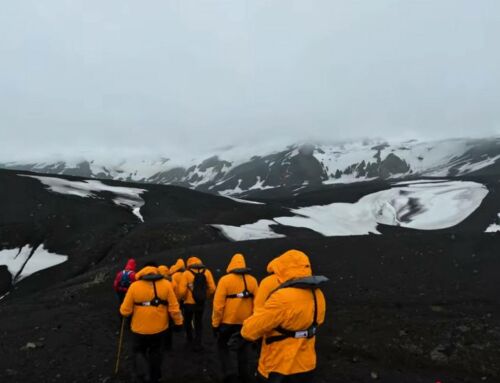An incredible number of 143 new Nazca Lines discovered in Peru, with the help of A.I. technology.
A team of Japanese researchers from Yamagata University and IBM Research have discovered 143 stunning geoglyphs, etched into the desert in southern Peru around the enigmatic Nazca Lines.
It is yet another example of how technology is assisting archaeology because a number of images were found using state-of-the-art AI technology developed by IBM, finds that were then confirmed with an on-site investigations.
A research team led by Professor Masato Sakai (Cultural anthropology, Andean archeology) at Yamagata University discovered
142 new geoglyphs, which depict people, animals and other beings, on the Nasca Pampa and surrounding area in Peru, South
America.
Situated mainly in the west of the Nasca Pampa, these new geoglyphs were identified through fieldwork and analyzing high-resolution 3D data, among other activities conducted up to 2018. The biomorphic geoglyphs are thought to date back to at least 100 BC to AD 300. Additionally, in a feasibility study carried out from 2018 to 2019 together with IBM Japan, the university discovered one new geoglyph by developing an AI model on the AI server IBM Power System AC922 (*1) configured with the deep learning platform IBM Watson Machine Learning Community Edition (formerly known as IBM PowerAI) (*2.) . This study explored the feasibility of AI’s potential to discover new lines, and introduced the capability to process large volumes of data with AI, including high-resolution aerial photos, at high speeds. This represented the first glyph at the site discovered by an AI.
Professor Sakai and other researchers at Yamagata University have engaged in initiatives since 2004 (*3) to study the Nasca Lines, a UNESCO World Heritage Site. In addition to successfully identifying many geoglyphs, Professor Sakai and others have carried out activities to preserve this heritage site. However, there is still much work needed to be done in surveying the distribution of these geoglyphs. In addition, the expansion of urban areas has brought damage to the lines, drawing attention to the protection ofthe Nasca Lines as a social issue.
Building on the foundation of the first collaborative feasibility study with IBM Japan, Yamagata University has newly entered into an academic agreement to collaborate with the IBM Research, and tap into IBM’s extensive initiatives to analyze and leverage large, complex data sets, such as remote sensing and geographical data, with AI. Moving forward, researchers will enrich their understanding about the distribution of the geoglyphs by utilizing IBM PAIRS Geoscope (IBM PAIRS) (*4) , an AI platform from the IBM Thomas J. Watson Research Center for analyzing 3D spatio-temporal data quickly and efficiently. In addition, the researchers aim to produce a location map based on the results of fieldwork. This technology and these efforts are expected to promote understanding of all the Nasca Lines as a whole, and accelerate research and awareness towards activities to protect this World Heritage Site.
source Yamagata University






Leave A Comment